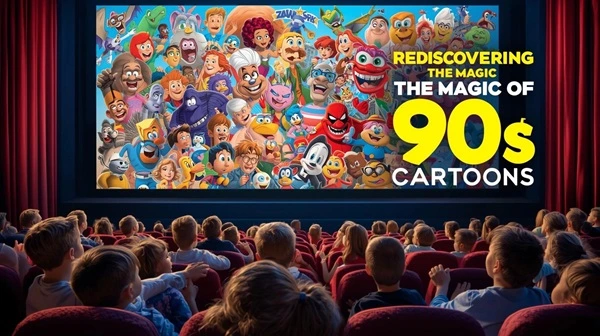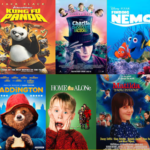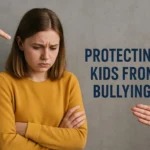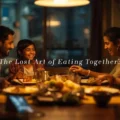A Nostalgic Trip Down Memory Lane
If you grew up in the 90s, chances are your childhood was painted with bright colors, catchy theme songs and unforgettable characters. From Tom & Jerry chases on Sunday mornings to the lessons of friendship from Popeye, those cartoons weren’t just shows—they were experiences that shaped our imagination, humor and values.
Today, as many of us have become parents, we often catch ourselves humming those old tunes or showing clips of our favorite 90s cartoons to our kids, hoping they’ll love them as much as we did. But that brings up an interesting question—were 90s cartoons really better or is it just nostalgia speaking? And in an age of hyper-digital animation and fast-paced storytelling, do those classic cartoons still hold any real educational or entertainment value for children today?
Let’s take a deep dive into what made 90s cartoons so special, how they differ from today’s shows and why they might still have a place in modern parenting.
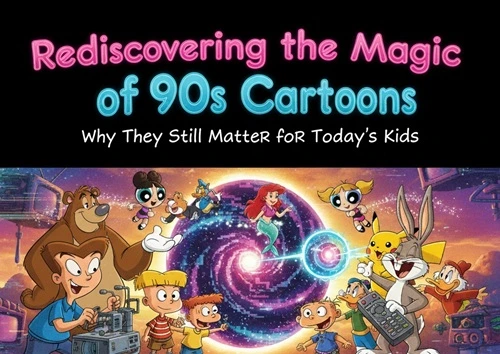
The Golden Age of Cartoons: What Made the 90s Cartoons So Special
The 1990s were a unique time for children’s entertainment. It was the era before smartphones and streaming apps—when kids waited eagerly for their favorite show to air at a specific time. The experience itself was magical.
Cartoons like DuckTales, The Flintstones, The Jetsons, Scooby-Doo, Swat Kats, Johnny Bravo, Dexter’s Laboratory, The Powerpuff Girls and Pokemon dominated the TV screens. Each had a distinctive personality—quirky, humorous and often carrying subtle moral lessons.
What made these shows stand out was their balance of fun, creativity and value-based storytelling. They weren’t loud or overstimulating. Instead, they allowed children to connect emotionally with the characters and learn meaningful life lessons, often without even realizing it.
How 90s Cartoons Helped Kids Learn Without Realizing It
Cartoons of the 90s were educational in their own way—not in the textbook sense, but in the way they nurtured creativity, problem-solving and empathy.
- Moral Lessons and Friendship:
Shows like Winnie the Pooh and The Powerpuff Girls taught kids about kindness, teamwork and standing up for what’s right. Even Tom & Jerry—despite all the chaos—reminded us about persistence and the spirit of never giving up. - Imagination and Creativity:
Dexter’s Laboratory sparked curiosity about science and invention, while Popeye subtly encouraged healthy eating (yes, spinach!). These shows pushed kids to think beyond ordinary boundaries. - Cultural Exposure:
Pokemon introduced the concept of friendship, loyalty and even global culture in an adventurous way. The Jetsons gave a glimpse into a futuristic world long before technology became so advanced. - Patience and Attention Span:
Since there were no “skip intro” buttons or binge-watching options, kids learned to wait for episodes. This taught patience—a quality that today’s fast-paced entertainment rarely encourages.
Why Today’s Parents Still Love Those Cartoons
For today’s parents, 90s cartoons represent more than just entertainment—they symbolize a time of innocence and joy. Watching them again, whether on YouTube or through streaming platforms, feels like revisiting a warm corner of our childhood.
But beyond nostalgia, there’s also a genuine sense of appreciation for how simple yet impactful those shows were. The stories were clean, the humor was harmless and the lessons were subtle but valuable.
As parents, we often look for content that can keep our children entertained and teach them something worthwhile. 90s cartoons fit that balance beautifully.
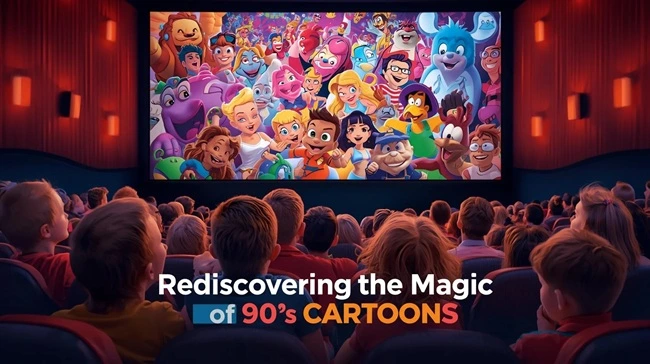
The Big Shift: How Modern Cartoons Are Different
Fast forward to today—animation has evolved drastically. The colors are sharper, the movement smoother, and the storytelling faster. Cartoons like Peppa Pig, Dora the Explorer, Cocomelon, PAW Patrol and Ben 10 dominate children’s screens.
There’s no denying that today’s cartoons are more technologically advanced and often cater to educational goals, especially for toddlers. But the difference lies in depth and pacing.
Modern cartoons often focus on shorter attention spans, using repetitive music and fast scenes to hold interest. While this works for instant engagement, it may not always encourage deep emotional connection or creative thinking.
On the other hand, 90s cartoons allowed space for imagination. There were pauses, emotions and subtle humor that made kids think, not just react.
90s Cartoons vs. Today’s Cartoons: A Generational Comparison
| Aspect | 90s Cartoons | Modern Cartoons |
|---|---|---|
| Storytelling | Slow-paced, character-driven | Fast-paced, visually stimulating |
| Lessons | Implicit moral and social values | Explicit learning themes |
| Humor | Witty, layered, family-friendly | Simplified, often repetitive |
| Visuals | Hand-drawn or basic animation | Digitally advanced, vibrant |
| Engagement | Emotional and imaginative | Short-term and sensory-based |
Both eras have their strengths. While 90s cartoons focused on emotional growth and storytelling, today’s shows lean more toward structured learning and digital appeal.
Are 90s Cartoons Still Relevant for Today’s Kids? Absolutely.
In fact, introducing your children to 90s cartoons can be one of the most meaningful gifts you give them. Here’s why:
- Timeless Lessons:
Friendship, honesty, courage and kindness never go out of style. Those themes still resonate with kids today. - Less Screen Overload:
The slower pacing helps balance overstimulation from fast-moving modern shows. - Shared Experiences:
Watching Scooby-Doo or DuckTales together allows parents to bond with their kids and share a piece of their own childhood. - Imaginative Thinking:
Without overly flashy visuals, kids are encouraged to visualize, imagine and think creatively. - Safe and Clean Entertainment:
90s cartoons were simple, non-violent (in most cases) and free from adult innuendos—making them a safe viewing choice.
When Nostalgia Meets Parenting: Finding the Right Balance
As parents, it’s natural to feel emotionally attached to the cartoons we grew up with. However, nostalgia shouldn’t cloud our judgment. Today’s cartoons also have their strengths—especially for early learning and language development.
The key lies in balance. Introduce your kids to 90s classics for their heartwarming stories and morals, but also let them explore modern shows that are designed for educational purposes.
For example, a mix of Tom & Jerry for humor, Dexter’s Laboratory for creativity and Peppa Pig for communication skills can create a well-rounded viewing experience.
How to Reintroduce 90s Cartoons to Your Kids
If you’re planning to bring the magic of 90s animation into your home again, here are a few fun ideas:
- Pick a Weekly “Retro Cartoon Night”:
Every Friday or weekend, sit with your child and watch one classic cartoon episode together. - Talk About the Story:
Discuss what they learned from it. For instance, ask, “What do you think Dexter was trying to invent?” or “Why do you think Scooby-Doo is scared but still brave?” - Compare Then and Now:
Let kids share what they like about both eras—it’s a great way to encourage observation and conversation. - Use It as a Creative Tool:
After watching, ask your child to draw their favorite character or imagine their own cartoon idea inspired by it.
Visit and Subscribe Our Youtube Channel For Kids Stories Videos
Popular 90s Cartoons Worth Revisiting
If you’re wondering where to start, here’s a list of evergreen classics that are both fun and meaningful for kids:
- Tom & Jerry – Timeless humor and lessons in persistence.
- DuckTales – Adventure, family bonding and curiosity.
- Scooby-Doo – Teamwork, mystery-solving and courage.
- Dexter’s Laboratory – Curiosity and scientific imagination.
- Popeye the Sailor – Healthy eating and perseverance.
- The Powerpuff Girls – Empowerment, teamwork and friendship.
- Pokemon – Loyalty, adventure and never giving up.
- The Jetsons – Visionary thinking and futuristic curiosity.
- Swat Kats – Teamwork and bravery.
- Winnie the Pooh – Emotional intelligence and kindness.
Each of these shows offers something unique and enriching for both children and parents.
Conclusion: Passing Down the Magic
The charm of 90s cartoons lies not just in their animation but in the values they carried. They were simple yet profound, entertaining yet meaningful. For today’s generation, they offer a refreshing change of pace from the overstimulating world of digital entertainment.
As parents, sharing these cartoons with your children is more than just revisiting the past—it’s passing down a piece of your childhood, wrapped in laughter, lessons and love.
Because some stories never age—they just find new hearts to inspire.
For more such Entertainment News or Parenting Tips , Please Follow Popnewsblend.com

Hi, I’m Prashant Jain — a curious soul, storyteller, and content creator at heart.I’ve always been drawn to the world of entertainment, travel, sports, health & lifestyle — not just as a writer, but as someone who genuinely lives these experiences. Whether I’m binge-watching the latest OTT series, exploring offbeat spiritual destinations in India, or diving deep into wellness routines and cricket match insights, I love sharing what I discover with like-minded readers.
PopNewsBlend is my way of blending personal journeys with meaningful stories — ones that inform, inspire, and keep you ahead of the curve. Everything I write comes from real observations, hands-on experiences, and a deep passion for understanding the world around us.
Discover more from Popnewsblend
Subscribe to get the latest posts sent to your email.

